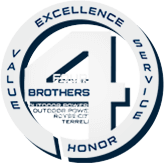Tips For Using Tractor Attachments
 Tractors are rugged, durable and powerful pieces of equipment that can bring a lot of utility to a growing operation. Even the toughest and most capable machines need the right implements and attachments to apply all that power to increase productivity. When it comes to tractors, there are a lot of different attachments for you to choose from, whether you need to till, mow, or even dig. If you know the proper way to use your equipment, it can increase performance and make your machines last longer.
Tractors are rugged, durable and powerful pieces of equipment that can bring a lot of utility to a growing operation. Even the toughest and most capable machines need the right implements and attachments to apply all that power to increase productivity. When it comes to tractors, there are a lot of different attachments for you to choose from, whether you need to till, mow, or even dig. If you know the proper way to use your equipment, it can increase performance and make your machines last longer.
We at Four Brothers Outdoor Power want all our clients to make the most of their hard-working equipment, so we’ve compiled this informative guide about using attachments and implements. If you’re looking for tractor attachments or tractors for sale in Royse City and Terrell, Texas, get in touch with our sales department. We’re proud to be the chosen tractor dealer for our friends from Garland, Canton and Greenville.
Before You Begin
Before you begin to use any new machine, you should always go through the owner’s manual. This applies even if you’ve used similar attachments before. Each tractor model is different and so are the attachments and implements that go with it. Always read the owner’s manual for specific guidelines and information straight from the manufacturer. Reading and understanding the information you’ll find there is the best foundation for using your tractor and implements.
You should also ensure that all machines are in good shape before you begin working. This involves checking the guards and shields are in place and functioning properly. This also goes for the guards around power take-off shafts, gearbox, and any other moving part of the equipment. Check any hydraulic lines for any signs of damage or wear and tear, and make sure the connections are tight and secure.
Loading Implements
Your tractor hitch is designed to keep the downward and rear force during a pull below the machine’s center of gravity. You should keep the angle of the pull low by always hitching to the drawbar. When you pull an attachment at an angle that’s above the center of gravity, it’ll overturn the tractor. Even compact lawn or garden tractors can flip without a proper hitch.
When hitching to a drawbar, position the tractor so the hole in the drawbar aligns with the one in the hitch. Stop the engine and put your tractor in park or else set the brakes. Use the right hitch pin and security clip to attach the implement properly. Raise the implement jack stand and make sure the wheels can move freely. Then connect the PTO shaft, hydraulic hoses, and any electrical connections as required by the specific equipment.
If you’ve got a 3-point hitch, begin by moving the tractor drawbar forward and position it to the pinholes and draft arms are aligned properly with the hitch points. Raise or lower the draft arms as necessary to match the hitch points. With the equipment off and brake engaged, attach the left draft arm (using the right sized hitch pin and clip!), then adjust and connect the right arm. After that, you can start the tractor and raise the arms with hydraulics as needed.
Next, you have to match the top link of the 3-point hitch to the implement’s upper hitch point. Raise the lift arms to extend the reach or drive ahead with the implement down to adjust if needed. If the upper link has been adjusted too many times, the implement may not be level. You might need to re-level before you can safely operate the implement. Finally, attach the upper hitch pin and security clip.
Using Implements
Your attachments and implements draw power from your tractor in different ways, such as PTO, hydraulics, or pull-behind/ground-driven. Here are some quick tips for these methods:
Ground-Driven
Implements such as disks, harrows and rakes are often ground-driven. This means they don’t need power pumped into them and will move when the tractor moves and drags them along. A lot of these implements are much wider than the tractor size, so remember to take that extra space into account. When traveling on public roads, you have to pull them into a transportation position.
Power Take-Off
PTO takes power from your tractor’s drivetrain and puts it in your implement. This is one of the most common attachment power sources. PTO also requires some extra safety measures for your tractor’s operation, as it spins very fast and can grab things like loose hair or clothing and pull them under the tractor. Operators should always be aware of this. Inspect all guards and shields before starting work and always make sure to do any hitching and connecting with the tractor powered down.
Hydraulics
Hydraulics use pressurized liquid to transfer power to implements. Since hydraulic fluid will always be pressurized, you have to wear the right safety glasses or face shield and gloves when working with these systems. For hydraulics to avoid overheating, they need to have clean oil and proper lubrication. The extreme pressures also make leaks likely, so any sign of leaking fluid is a sure sign to stop working hydraulics and power down until the problem can be addressed.
We hope you’ll find this information helpful when using tractor implements and attachments. If you’re looking for tractors or tractor attachments for sale in Royse City and Terrell, Texas, contact Four Brothers Outdoor Power and have a chat with our helpful staff. We’re also the chosen tractor dealer for all our clients from Garland, Canton and Greenville.



